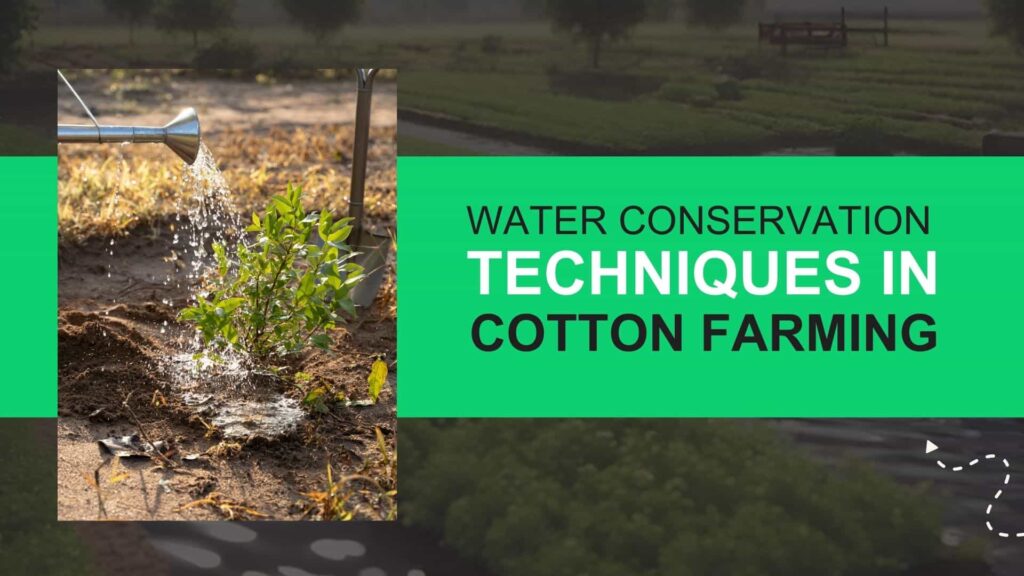Introduction
Cotton farming consumes a lot of water, but due to rising concerns about water scarcity and climate change, cotton farmers must adopt water conservation techniques. These methods help farmers maintain sustainable cotton agriculture, increase cotton crops yields, and lower operational costs. Below are five essential water conservation techniques that support long-term sustainability in cotton farming.
Irrigation is crucial for cotton production, but inefficient systems waste water. Drip irrigation offers a solution by delivering water directly to the roots, reducing evaporation and runoff. This technique ensures farmers use water more effectively while preventing overwatering, which can promote disease. By choosing drip irrigation, farmers can cut water usage by up to 50%, significantly improving sustainability.
Rainwater Harvesting for Sustainable Water Use
Rainfall patterns have become unpredictable due to climate change, making rainwater harvesting an effective strategy for cotton farmers. Farmers can collect rainwater during the wet season, storing it in tanks or reservoirs for use during drier months. This method reduces dependency on groundwater and lowers irrigation costs. Storing rainwater provides cotton crops with a reliable water source when necessary, maximizing the use of available resources.
Soil Moisture Management Techniques
Maintaining proper soil moisture conserves water and ensures healthy cotton crops. Mulching involves covering the soil with organic material like straw or compost, which helps retain moisture and reduce evaporation. This practice also prevents soil erosion and boosts soil fertility. Additionally, soil moisture sensors allow farmers to monitor moisture levels, helping them decide when and how much water is needed for optimal growth.
Adopting Water-Efficient Cotton Varieties
Choosing water-efficient cotton varieties can dramatically reduce water usage. These drought-resistant varieties thrive with minimal water, making them ideal for regions with limited water availability. By planting these varieties, farmers can reduce water consumption without sacrificing yield quality. Additionally, these varieties are more resistant to pests and diseases, providing an added layer of reliability in water-scarce regions.
1. Drought-Resistant Varieties
Drought-resistant cotton varieties require less water, enabling farmers to reduce irrigation needs, especially in water-scarce areas. These varieties allow cotton farming to thrive even in challenging climatic conditions, maintaining healthy crops with minimal water input.
2. High-Yield Water-Efficient Varieties
Some cotton varieties are designed to produce higher yields with less water. These high-yield, water-efficient varieties help farmers maintain productivity while conserving water. These varieties benefit regions with water constraints, offering farmers an opportunity to maximize their output without overtaxing natural resources.
3. Pest and Disease Resistance in Water-Efficient Varieties
Water-efficient cotton varieties also tend to resist pests and diseases better, as they are more robust under environmental stresses. This reduces the need for pesticides, conserving water while promoting healthier crops. Selecting these varieties offers a win-win situation for farmers, as they reduce both water usage and the environmental impact of cotton farming.
Leveraging Technology for Precision Irrigation
Precision irrigation incorporates advanced technologies such as GPS, weather forecasting, and soil moisture sensors to deliver water exactly where and when it is needed. This method helps optimize water use, ensuring cotton crops get the precise amount of water they need to grow. Precision irrigation systems allow farmers to adjust their practices based on field-specific conditions, maximizing efficiency and preventing water waste. With this technology, farmers can enhance crop health, reduce water consumption, and increase overall farm productivity.
Water conservation is essential for sustainable cotton farming. By implementing efficient irrigation, harvesting rainwater, managing soil moisture, selecting water-efficient cotton varieties, and adopting precision irrigation technologies, farmers can reduce water usage while improving farming practices. As the global cotton industry faces environmental challenges, these strategies provide essential solutions to sustain cotton crops. Adopting these techniques will also teach farmers how to improve cotton crops productivity with sustainable techniques, ensuring the resilience of cotton farming in the face of climate change and limited resources.

